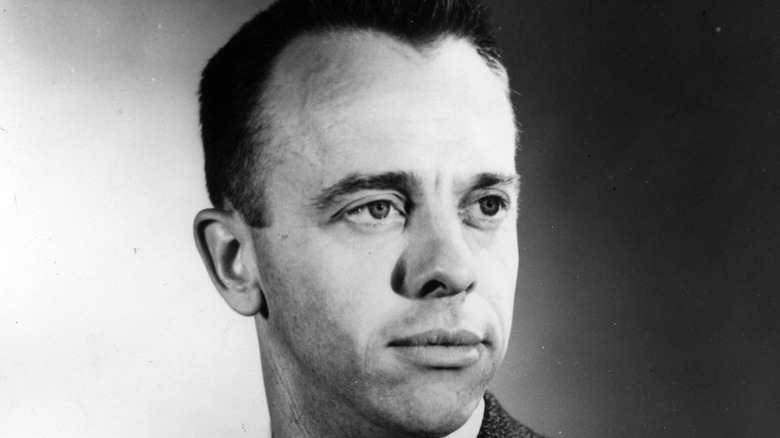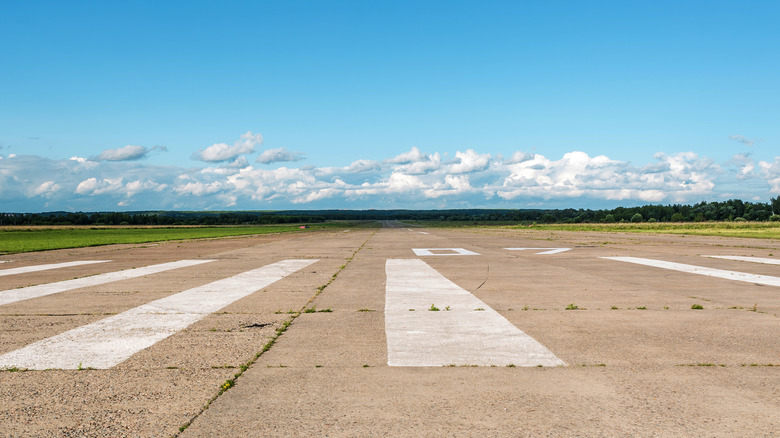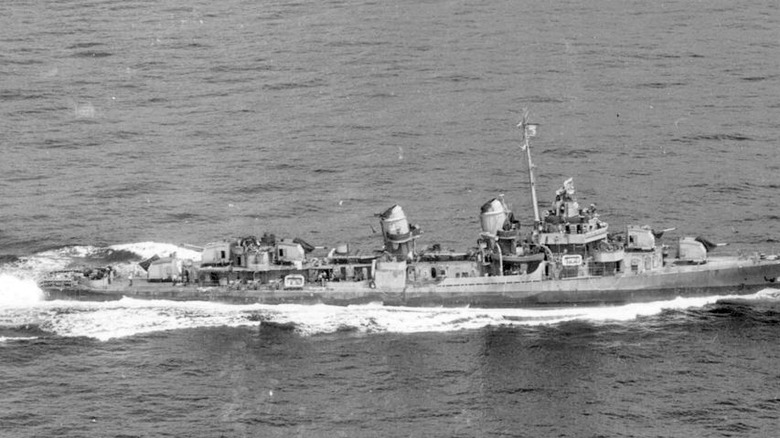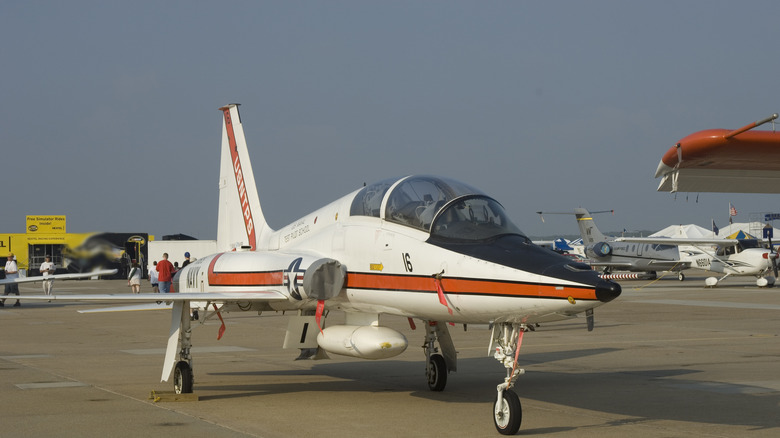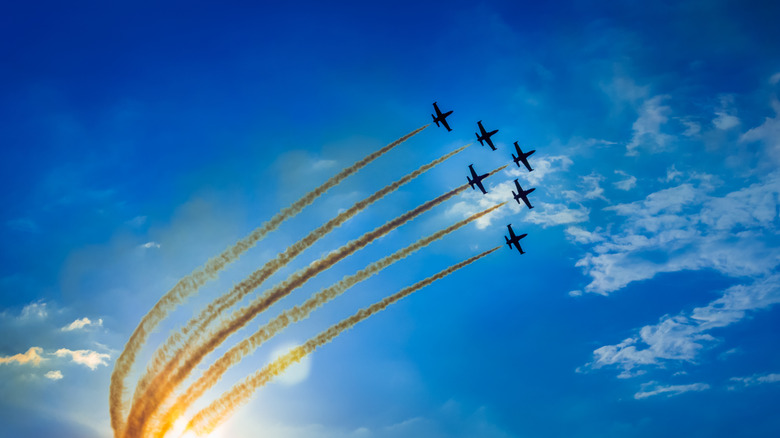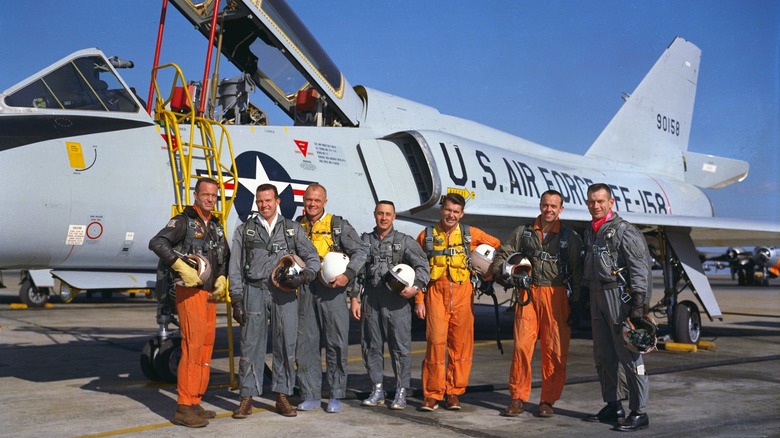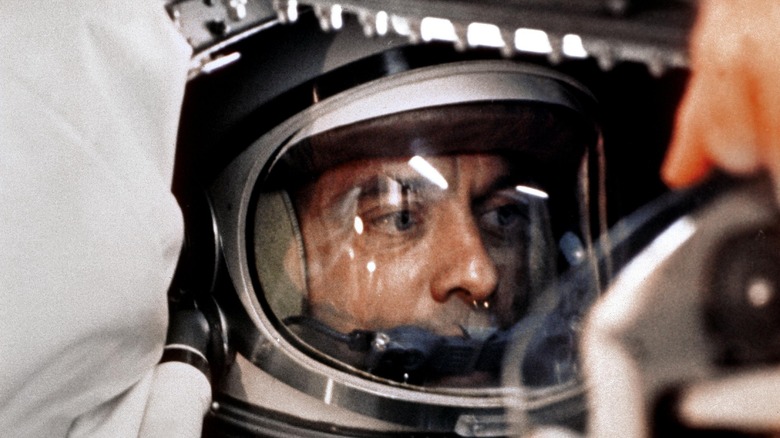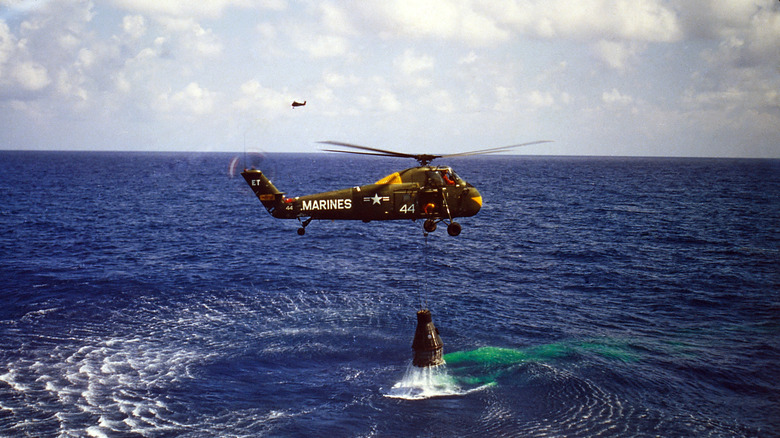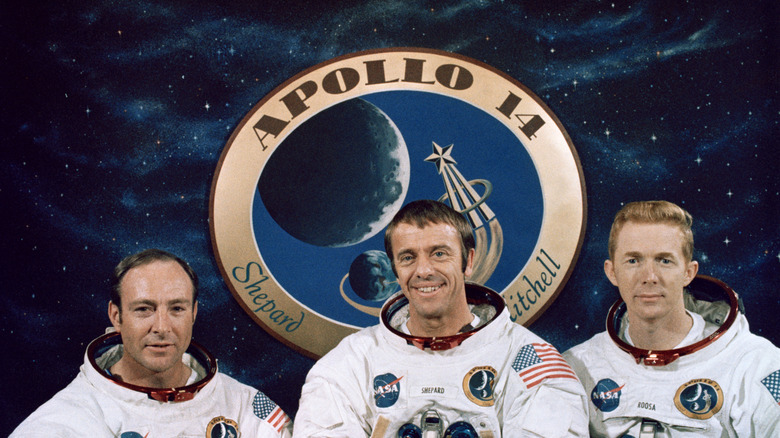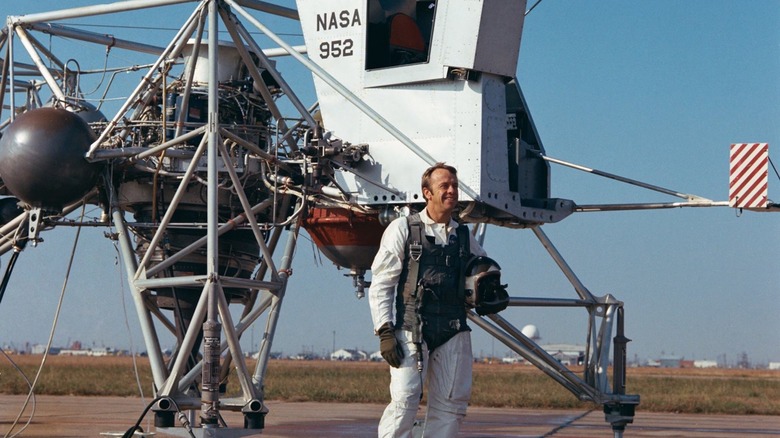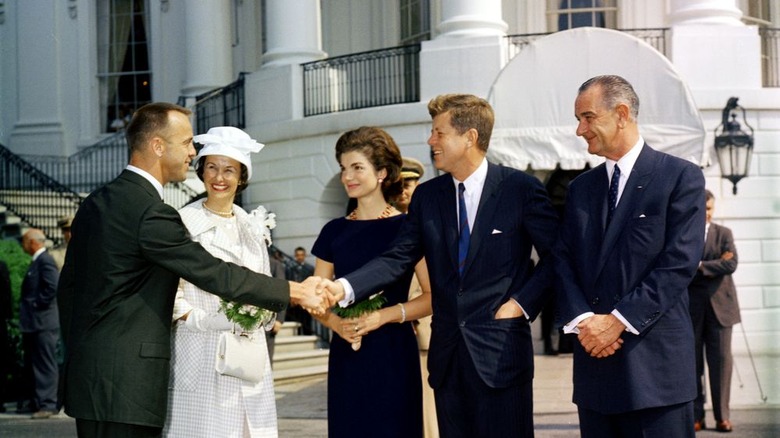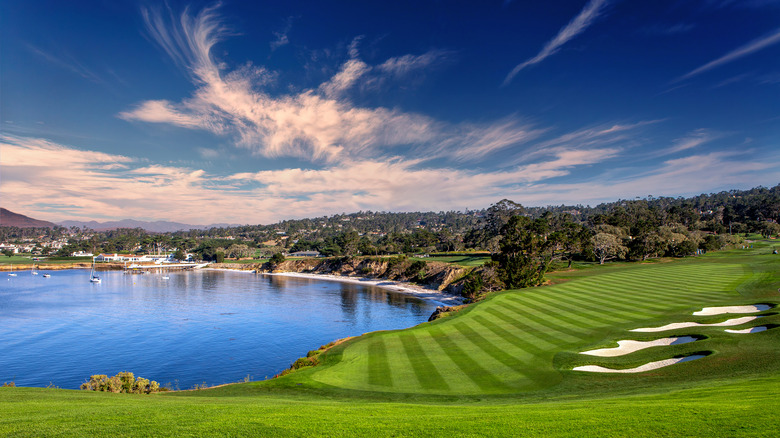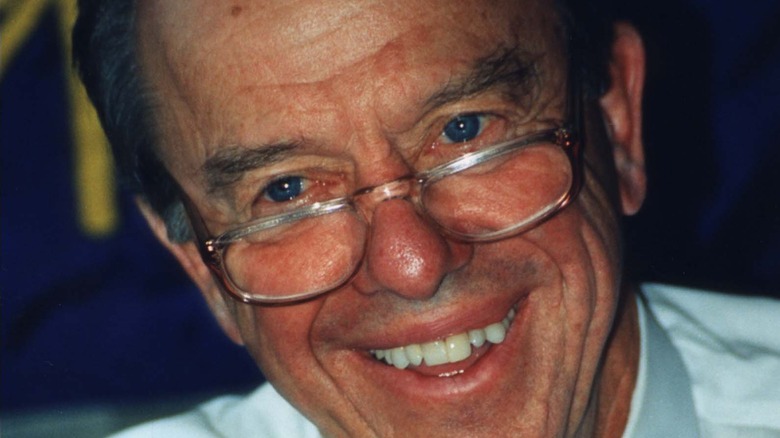The Untold Truth Of American Astronaut Alan Shepard
Alan Bartlett Shepard, Jr. was an American astronaut, pilot, veteran, businessman, and author. He is best known for his Freedom 7 space launch in 1961. However, Shepard had a busy career beyond NASA. He was in the Navy for a number of years and later became a businessman with various projects in Texas.
Born into an upper-class family in New Hampshire, Shepard had an imperious attitude that could flip on a dime throughout his life. He drove fast cars, doted on his children, and loved planes, as might be expected of a pilot. He was a serious astronaut despite his fun-loving side — exactly what NASA was looking for.
After his military service, Shepard expanded the borders of what people thought was possible for space travel, not just once but many times. Even when grounded from flight by an ear infection, he continued to work for the good of the space program in his role as chief of the Astronaut Office. He is a hero both of NASA and of the American people.
Alan Shepard worked odd jobs in airfields as a boy
Born in 1923, Alan B. Shepard, Jr. was born into an upper-class family in a very conservative town: Derry, New Hampshire. His father, Alan Shepard, Sr., was a retired officer in the Army, practically ensuring that Shepard joined the Navy instead.
Nevertheless, Shepard attended some of his schooling in a one-room schoolhouse. He was reportedly an excellent student, according to Achievement, a good sign for his future endeavors. His grade school teacher in particular, Berta Wiggins, saw great promise in him and often assigned him extra work. On her advice, Shepard skipped the sixth grade. Just a year later, he skipped the eighth grade, as well (via "Light This Candle").
Shepard was always interested in planes as a child and often ran odd jobs in the local airfield for the chance to be around pilots and airplanes — and to score plane rides from the pilots he helped out. As Astronautix writes, Shepard rode his bicycle approximately 10 miles to the airfield. According to "Light This Candle," he was the airfield's "fix-it kid." One of the pilots, Park, let Shepard, even as a child, taxi planes from one side of the field to the other. This shift from passenger to pilot was presumably a heady development for a young Shepard, and it cemented his desire to be a pilot himself.
Shepard narrowly avoided being killed by several typhoons in World War II
After graduating from the Naval Academy, Alan Shepard served on a destroyer, the USS Cogswell, for the last few months of World War II. Shepard was able to take leave for his wedding when he married Louise Brewer on March 3, 1945 (via "Light This Candle"). But Shepard's war service was also filled with harrowing tales: the bloody aftermath of the Battle of Okinawa, and the survival of the crew of the Cogswell after a sudden onslaught of typhoons (via "Light This Candle").
During December 1944, Shepard and the rest of his crew endured an awful typhoon that came out of nowhere when they were stationed near the Philippines (This was actually the second typhoon Shepard had survived by this point in his military career.) And it wasn't just a normal storm, but "the worst storm [they had] been in," according to a sailor on board. The towering waves battered the ship, and the sailors were tossed around helplessly below deck, slammed into floors and walls. The chaos lasted for two days, during which they weren't even able to eat.
Later, Shepard received orders for his transfer to flight school in September 1945 — orders he had been eagerly awaiting. Just a few weeks later, at the beginning of October, another typhoon hit the Cogswell and killed 36 men. Shepard had just narrowly avoided the accident — and avoided possibly being killed by the natural disaster, now named Typhoon Louise.
Shepard attended both civilian and naval pilot training
Alan Shepard entered several pilot programs after the war, even flying experimental planes. He studied at a civilian pilot school while in the middle of naval flight training in Corpus Christi, Texas, and Pensacola, Florida, after his early performance wasn't quite up to snuff. He was also simply eager to fly as much as possible, writes Achievement. After flight school, Shepard worked with the 42nd Fighter Squadron for several tours of duty in the Mediterranean.
In 1950, Shepard began flying experimental aircraft such as the F3H Demon and the F5D Skydancer after enrolling in the U.S. Navy Test Pilot School (via Biography). He also worked as an instructor there for a time. Shepard then attended the Naval War College, graduating in 1958. The next year, the newly created National Aeronautics and Space Administration (NASA) began looking for test pilots who would volunteer to, with training, become astronauts for the space flight program. Shepard's acceptance into the program and his eventual performance would change history forever.
Alan Shepard avoided being court-martialed while with the Navy
Alan Shepard narrowly avoided being court-martialed in the 1950s while working with a fighter squadron. Shepard had been caught while effectively joyriding in a Navy airplane he was testing, a McDonnell F2H Banshee, flying exceedingly low to the ground along the Chesapeake Bay Bridge and crossing into Ocean City, Maryland (via "Light This Candle" and Coffman Associates). The station commander, Rear Admiral Alfred Pride, had not been pleased. Luckily, he had enough friends in high places that he was instead only put "in hack," which meant he had to live apart from his wife and daughters for a few days. Shepard was also not allowed anywhere near an airplane during this time.
Despite this incident, Shepard was continually given the chance to test several different types of planes while on assignments with the Navy. He even saved another pilot's life while on duty. Shepard was a fun-loving person who had a strict sense of duty, as shown through these glimpses into his Navy life. Despite having a wife and young daughters, he was not afraid to cut loose, and it's easy to see why he jumped at the chance to work as an astronaut with NASA. Rocket ships were a much larger, more exciting version of airplanes. Alan Shepard was precisely what NASA was looking for.
Along with around a hundred other people, Alan Shepard was invited to work with NASA
In 1959, Alan Shepard was one of approximately a hundred test pilots invited to work with NASA for their new manned space programs. His invitation was initially misplaced, so he didn't actually receive the offer until later, according to NASA.
Along with six others, he was eventually chosen as the first group of astronauts the fairly new organization would be working with. The group ultimately became known as the Mercury 7. All seven men went through rigorous training to work as astronauts, including harsh spins in the centrifuge and work in the Gimbal Rig Mercury Astronaut Trainer (also known as the MASTIF). NASA writes that astronaut training "was intended to provide the new astronauts with an education in astronautics and space biology, conditioning for space flight, training in the operation of the new Mercury vehicle, familiarization with ground operations, and aviation flight training" (via Air and Space).
According to Space, Shepard was originally selected to pilot the first American flight into space with John Glenn as his backup. The Soviet cosmonaut Yuri Gagarin beat the Americans into space by around a month, though Shepard's take-off was rescheduled due to the weather. He eventually made his journey in May 1961.
Shepard was the first American to travel in space
In May 1961, Alan Shepard launched into space on the Freedom 7 capsule. The flight lasted just 15 minutes and reached a height of 116 miles into the air, writes History. The successful, historic flight helped put NASA back on the map during the early years of the space race, considering it came just weeks after Yuri Gagarin's flight.
Shepard's flight suit was modeled after those in the Navy, and the silver coating was meant to increase his visibility. In addition, the suit had 27 zippers, one of which wrapped all the way around his body (via Air and Space). To actually launch Shepard (and, later, Gus Grissom) into space, NASA turned to the military and their already-developed defense missiles; they used a U.S. Army Redstone rocket for both missions. After 1962, however, NASA used U.S. Air Force Atlas ICBMs.
Shepard stayed inside the capsule during the entire flight and also maintained contact with ground control nearly all the way through his journey. He made a water landing in the Atlantic Ocean, which was planned for. He was then picked up and taken to the USS Lake Champlain, a nearby aircraft carrier.
Alan Shepard suffered from Meniere's disease
In 1963, Shepard was named a command pilot for the Gemini missions. A year later, however, he was unexpectedly grounded from flight after developing Meniere's disease in his ears. Shepard began experiencing a number of dizzy spells, nausea, and balance issues (via Hearing Health Matters). During this period, Shepard was forbidden from flying, and he was given a desk job as the chief of the Astronaut Office. Shepard did not fly for the next six years, though, according to BBC, he was allowed to fly a training aircraft, albeit only with a second qualified pilot on board.
In 1968, Shepard heard from a fellow astronaut named Tom Stafford that an ENT specialist in Los Angeles, Dr. William House, had created a surgical procedure that would return his hearing completely. Shepard was a candidate for surgery, and as he wrote in his book "Moonshot: The Inside Story of America's Apollo Moon Landings," he wanted to go ahead with the surgery. He told his wife Louise, "I want so badly to fly again in space. I'm willing to try anything" (via Hearing Health Matters). Shepard entered the hospital under a false name, and the surgery was ultimately successful. NASA scrutinized him and his medical record for two years before he was allowed once again to fly and, later, go into space.
In 1971, Shepard was the oldest astronaut in space
Alan Shepard got back into space during the Apollo 14 moonshot. At the time, he was the oldest astronaut to have been in space, and he dealt with criticism for his age. For one thing, no one was quite sure what effect aging might have on performance during a mission, writes BBC.
In a 1991 interview (via BBC), Shepard said of the process: "We got all kinds of flak from the guys. In the first place, I hadn't flown anything since 1961, and here it was 10 years later, and the two guys with me had not flown before at all, so they called us the three rookies."
Shepard had to fight to even get on the crew for the earlier Apollo 13 mission, and he was assisted by friend and fellow astronaut Deke Slayton, who was in charge of assignments for the Apollo crew. However, higher ups at NASA weren't on board with this plan. Shepard and Slayton eventually assigned another crew to Apollo 13 in exchange for Shepard being allowed to command the Apollo 14 crew, despite not having command experience in space. The mission was, luckily, successful, and once on the moon Shepard showed off both his gregarious personality and his hobbies by hitting two golf balls across the lunar surface. He had brought a golf club specifically designed for the purpose.
Shepard continued to work with astronauts even when grounded from flight
Alan Shepard was chief of the Astronaut Office when he was grounded from flight in the 1960s and after the Apollo 14 mission, prior to his retirement. Though he wasn't flying in the '60s, Shepard managed the astronauts' schedules and training, writes NASA. The position was fairly new at the time, having been created in 1962; Shepard was only the second astronaut to hold it.
In 1971, Shepard was the first astronaut to be promoted to rear admiral. And after the Apollo 14 moonshot, Shepard returned to the Astronaut Office position for three years before his retirement in 1974.
According to Space, while in this position, Shepard was also partly responsible for deciding which astronauts should fly during specific missions, including the Gemini missions. Several Gemini astronauts later flew on the Apollo missions, and a few even made it to the moon.
Alan Shepard was the man everyone wanted to be
Alan Shepard drove fast cars, regularly landed planes either during storms or at night, and generally gave off the vibe of being a "real man," the kind of person everyone else wanted to be, even if they didn't necessarily like him personally. As a child, Shepard cultivated a sense of adventure, bravery, and determination, according to "Light This Candle," and he was eager to leave the small town of Derry for the next great chapter of his life.
Along with airplanes, Shepard also thoroughly enjoyed a good round of golf — as shown by his lunar golfing exploits. He brought friends along for fun or on adventures, even if he often preferred to be alone. He made friends easily and possessed the elusive quality of making people feel special when he singled them out, but did not keep friends close to him. He was quietly self-confident, despite his preference of loneliness (via "Light This Candle").
Overall, Shepard cultivated hobbies and engaged in death-defying exploits that made people like him and want to do the kinds of things he did. He also possessed an all-American charm that made it easy for him to gel with people wherever he went. Though he may not have been the easiest person to live or work with, his lifestyle was certainly enviable. Even if it came with a lot of hard work attached.
Shepard was a millionaire
After his retirement from NASA, Alan Shepard served on the boards of several corporations. He was an investor in both real estate and oil exploration. According to The Famous People, Shepard made money in banking, becoming a co-owner of Baytown National Bank. He also had business projects in Texas, including working with a Houston-based construction company that built Kmarts across the state (via "Light This Candle"). Shepard bought a partnership of a Texas ranch as well. He was never a man to sit idle, and he had several projects going at once.
Even before leaving NASA, he was a millionaire. He created Seven Fourteen Enterprises, Inc. as an umbrella company (named for his two flights into space). He and his wife owned several homes in Houston, Colorado, and Pebble Beach, California, with the last one being where the two of them eventually retired, writes CNN. Shepard was also president of the Mercury 7 Foundation, now the Astronaut Scholarship Foundation, which raises money for students studying in the sciences.
Alan Shepard was diagnosed with leukemia
Alan Shepard was diagnosed with leukemia in 1996, and he underwent major blood transfusions and drug treatments in order to treat it (via "Light This Candle"). Shepard died two years later at Community Hospital near Monterey, and his wife Louise died a month after him.
According to the Los Angeles Times, a family spokesperson didn't give the exact cause of his death, however; Shepard had been suffering from various other health problems besides leukemia. He was 74. Shepard's ashes were scattered with his wife's in the sea near his Pebble Beach home, writes ThoughtCo.
Overall, Alan Shepard did his duty to his country, though he had fun on the side. Shepard effectively filled his life with both entertainment and fulfilling and necessary work. "I think first of all you have to be there for the right reason," said Shepard, according to Achievement. "You have to be there not for fame and glory and recognition and being a page in a history book, but you have to be there because you believe your talent and ability can be applied effectively."
